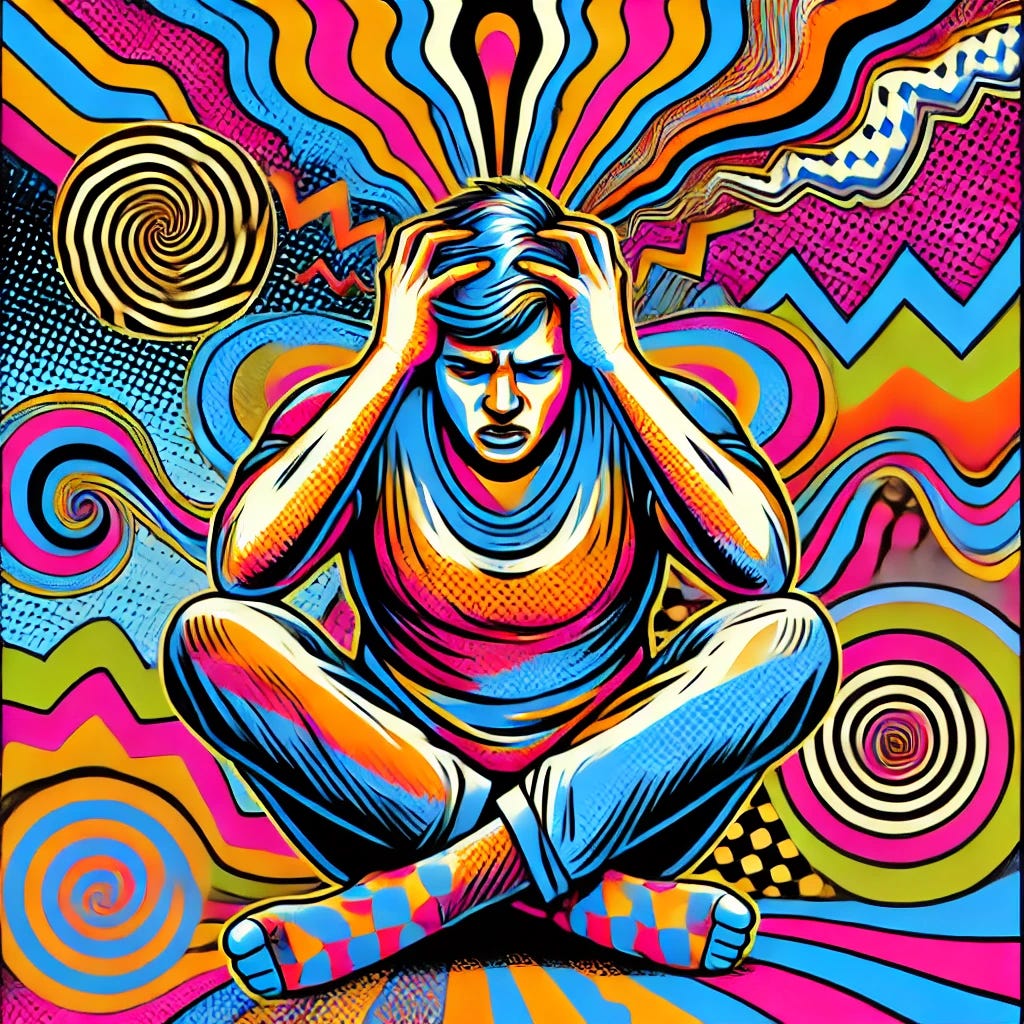Healing Hurts
The Real Work of Healing: Messy, Non-Linear, and Often Painful
Healing is often romanticised as a smooth, enlightening journey filled with moments of clarity and self-love. While there are undeniably beautiful moments along the way, healing also has a darker side, one that’s painful and deeply uncomfortable. It’s a process that, much like going to the gym after a long hiatus, requires commitment, patience, and a willingness to endure discomfort for the sake of long-term well-being.
The Reality of Healing
When we first embark on a healing journey, the idea of self-improvement is often enticing. We imagine ourselves stepping into a new phase of life, letting go of past hurts, and becoming the best version of ourselves. However, the reality is much grittier. Healing often feels like I’m drowning in emotional chaos. There have been nights when I’ve questioned if I’m really healing at all or just sinking deeper into pain. Some days, I can’t see a way out, and I wonder if all this struggle is worth it. It’s not just about feeling sad or angry; sometimes, it’s a nebulous kind of pain that doesn’t fit neatly into a label like anxiety or depression. It’s simply pain—and you can’t avoid it forever.
What can be particularly confusing is that this pain might not even be linked to specific thoughts or memories. Sometimes, it’s the body’s way of releasing old trauma and tension that’s been stored for years. The pain you feel may be the physical manifestation of emotional wounds finally surfacing to leave your body. It’s as though the body has been holding onto these hurts, and now, in the healing process, they come up for release. This is not always easy to understand in the moment, but recognising it as part of the healing process can make it slightly easier to bear. This is often what happens during conscious connected breathwork, where the body accesses deep trauma and begins to release it. Though intense, this technique is a powerful tool for letting go of long-held emotional tension.
The Hidden Teachers in Healing
As we go deeper into the healing journey, we often find ourselves confronted with truths that are difficult to face. These truths can arise from within, during introspective practices like meditation or breathwork, but sometimes, external tools—such as psychedelics—can help accelerate this process. Psychedelics, in my experience, are particularly powerful in acting as teachers. They bring forward emotions and patterns that need healing, shining a spotlight on the areas you may be unaware of or have avoided for years.
While it can be brutal to face these hidden parts of yourself, psychedelics have a way of balancing the harshness with an underlying sense of softness. The process isn’t designed to break you, but to help you grow. These experiences, much like other forms of deep healing, offer a chance to break free from old patterns and open new pathways for emotional and spiritual development.
Psychedelics show you what needs to be seen, but like any other tool, the real work begins after the insights. The healing journey still requires immense effort to integrate these lessons and apply them in daily life.
The Ego's Sabotage
One of the hardest parts of healing is dealing with the ego, which will do everything it can to sabotage your progress. It’s like having an avoidant bad devil on your shoulder, whispering in your ear that you’re not capable of healing, that it’s too hard, or that you don’t deserve to feel better. The ego thrives on keeping you stuck in familiar patterns, no matter how unhealthy they may be. It will try to convince you that the discomfort of healing isn’t worth it and that retreating back to old coping mechanisms is safer.
This internal sabotage is a part of the healing process you have to put up with. The ego will resist change because change represents the unknown, and the ego loves to stay in control. You’ll find yourself wanting to give up or go back to your old ways of coping, and the voice in your head will try to convince you that you can’t heal. But it’s important to remember that this is just the ego’s fear talking. The truth is, the more you push through and sit with the discomfort, the weaker that voice becomes.
Letting Go and Loss
Letting go has been one of the hardest parts for me. There have been people I thought would always be in my life, but as I started healing, it became clear we were on different paths. It hurt deeply to let them go, and even now, I catch myself missing them. But I’ve come to realise that holding on would have only kept me stuck. Part of healing involves letting go—not just of people, but of old habits and outdated ways of thinking. You may lose friends or drift away from those who once seemed integral to your life. This, too, is painful. Not everyone will understand your journey, especially if your methods of healing are unconventional. Your growth might make some people feel threatened, as it can mirror their own unresolved issues. When you hold up a mirror to your pain, it sometimes reflects back onto others in ways that make them uncomfortable, leading them to dismiss your journey entirely. It can feel like a profound loss, but ultimately, letting go is necessary for your own healing.
Healing Isn't Linear
Healing isn’t a straightforward, linear process. There will be days when you feel worse than you did before. For me, it’s not uncommon to feel like I’ve regressed, but the difference now is that I’ve learnt to sit with those feelings rather than running from them. I allow the emotions to have their space, to say what they need to say, even if it’s uncomfortable.
Healing takes time and consistent effort. You won’t see results overnight, and the progress can often feel painfully slow. The key is to keep moving forward, even when it feels like nothing is changing. The insights you gain along the way can guide you, but it’s up to you to integrate those lessons into your daily life, step by step.
The Need for Rest
While it’s important to embrace the hard work that healing requires, it’s equally crucial to allow yourself moments of rest. You wouldn’t train your body intensely at the gym every day without taking breaks to recover, and the same goes for emotional healing. There will be days when it feels like too much, when you need to step back and breathe. That’s not failure; it’s self-preservation.
Healing can’t be forced or rushed, even though the discomfort may tempt you to try. As difficult as it is, letting the process unfold in its own time is essential for lasting transformation.
Ultimately, healing is about learning to coexist with the pain and the beauty of your journey. Recognising that growth hurts but also frees you. You may not always feel like you’re making progress, but every time you allow yourself to sit with those uncomfortable feelings, you’re strengthening your emotional muscles. I’m still learning to live in a more honest, authentic way. There are days when I get it right and days when I don’t. But I’m learning to be kinder to myself, to accept that healing isn’t about perfection—it’s about showing up for myself, even when it’s hard, even when I don’t want to.
The real work of healing happens in those uncomfortable moments when everything feels too raw, too real. It’s messy, non-linear, and often downright painful. The more you face the discomfort, the more you expand your capacity to hold space for all parts of yourself—the parts that are healing and the parts that are still hurting. And with that, you move forward, little by little, towards a place of greater peace.
Thank you for taking the time to read this piece! If it resonated with you, I'd greatly appreciate a 'Like'. Your likes play a significant role in enhancing the visibility of my work through the Substack algorithm. Your support means a lot. Thank you!







Morning Daniel. This article finds me receptive this morning. I think I need to do something like that.
Beautiful and timely post Dan. Thank you.